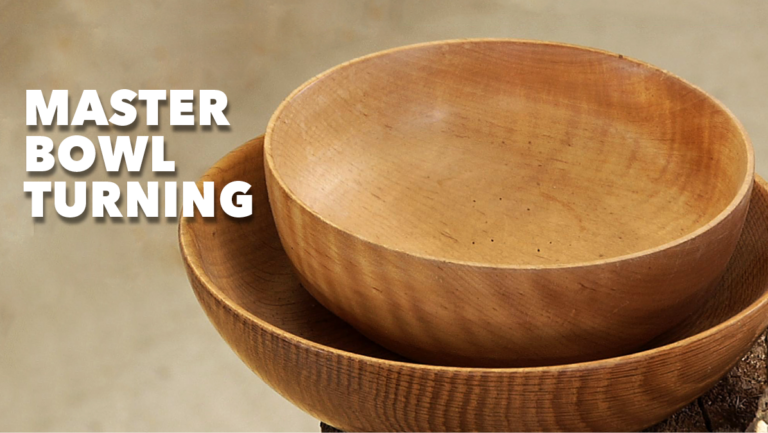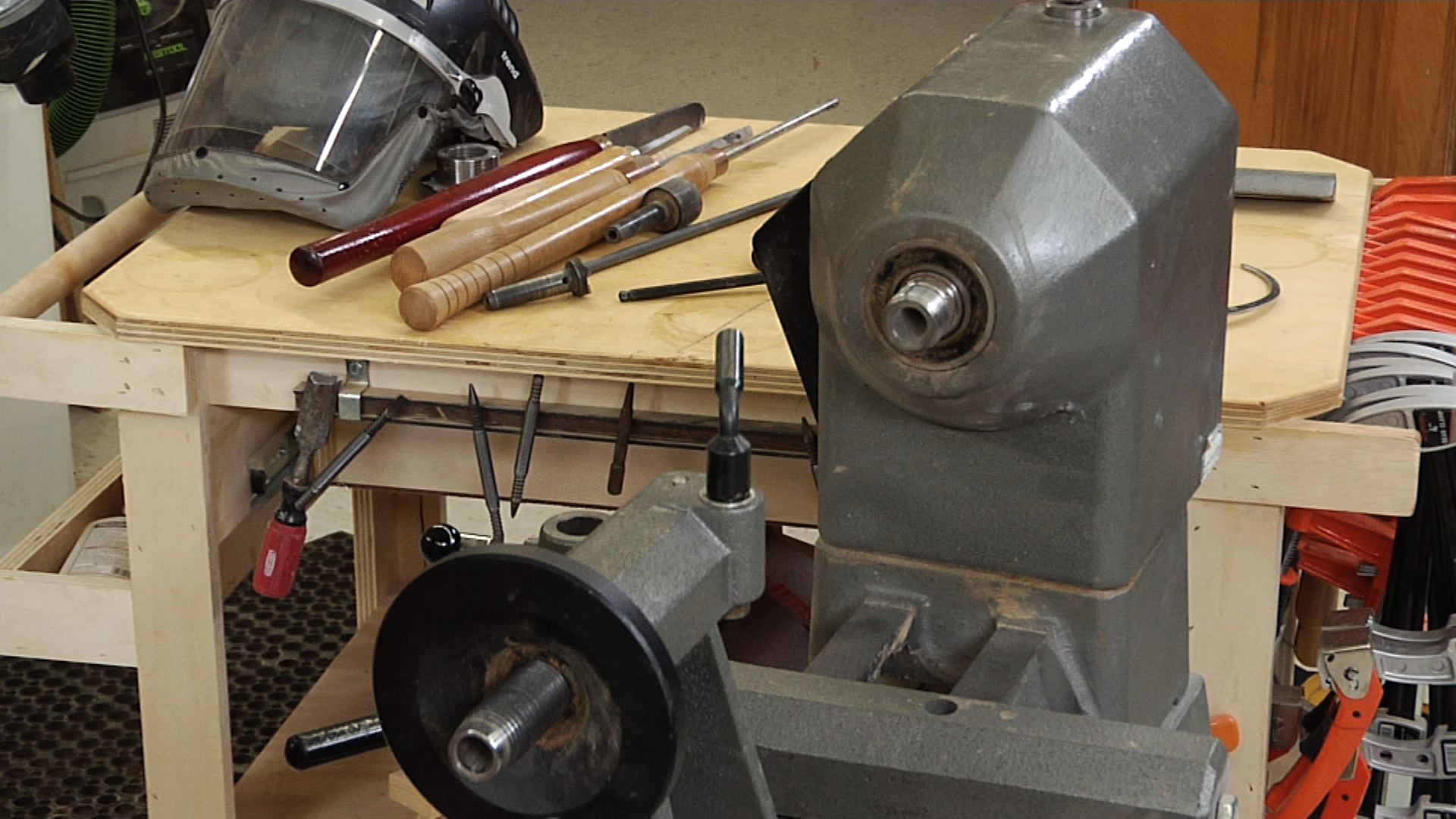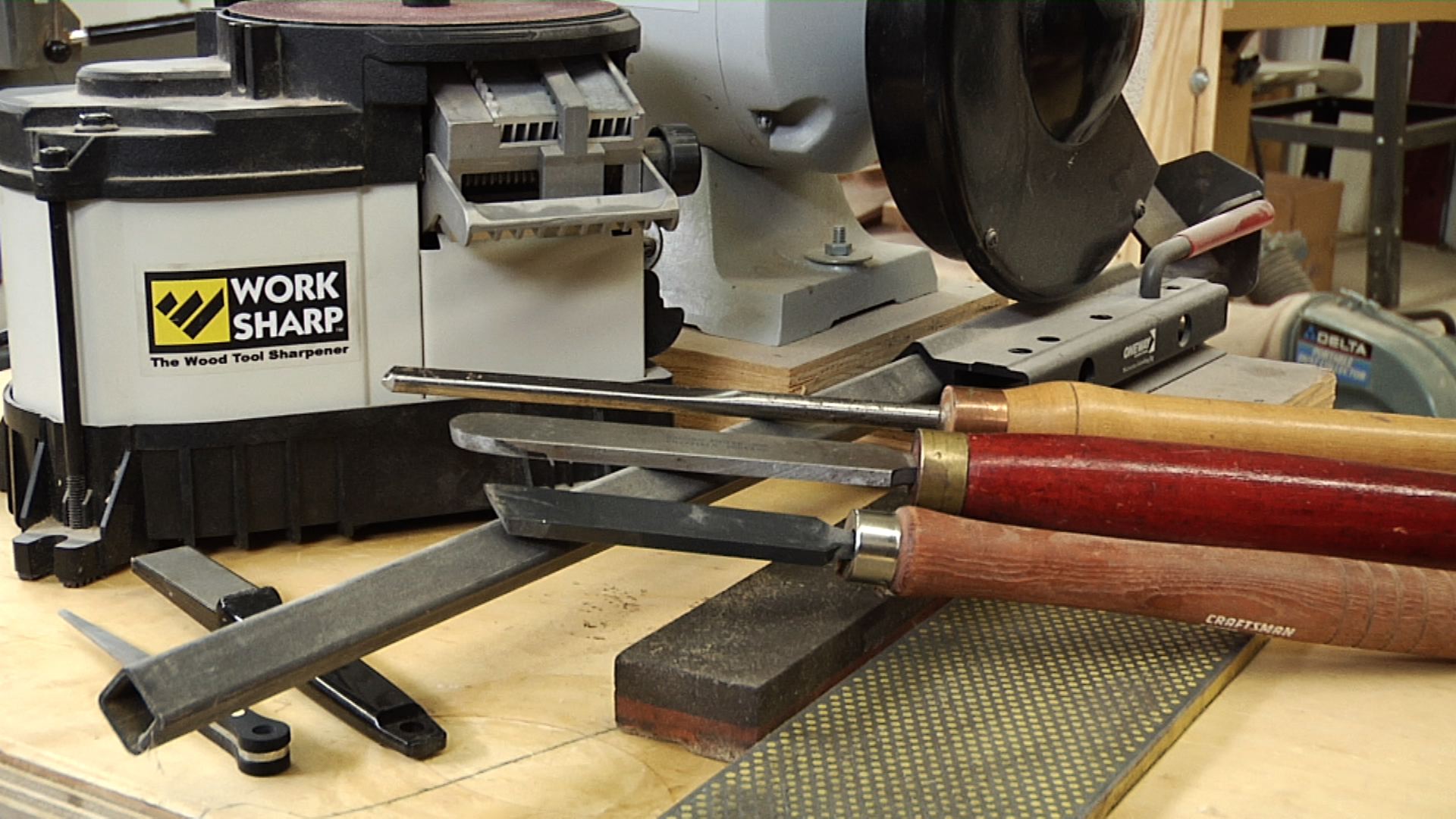
Master Bowl Turning
George Vondriska
- In-depth Instruction; over 192 mins
- On-demand video access anytime
- Bonus downloadable PDF resources
- Access to class Q&A


It’s important to use the right tool for the right job. Bowl turning chisels have a distinct shape, and must be used correctly. And, they have to be sharp. Unlike other tools in your shop you won’t send lathe chisels out to be sharpened; you need to learn to sharpen them yourself. This portion of the class provides you with a variety of approaches for keeping your chisels ready to cut.
A dummy board/paper joint sandwich provides a great way to mount a bowl to a faceplate. In this session you’ll learn how to correctly create the paper joint, and how to fasten this assembly to your faceplate.

Turning consists of distinct steps; roughing, shaping and sanding. Speed changes on the lathe are involved at each step, along with techniques that will help you handle the chisels safely, and get the best possible cuts on your bowl using the scraping technique.
Sanding can be a chore, but we’ll show you a way to make it go very quickly, and show you a shop-made device that will help grab lots of the sawdust you’re making, so it doesn’t end up all over your shop.

It’s great to graduate from the scraping technique to the shearing technique. Shearing provides a significantly better surface, which means less sanding. Who wouldn’t like that? Shearing is a little harder to do than scraping, so we’ll walk you through how to handle the chisel to avoid “catches,” and what kind of body movement is required to use a bowl gouge correctly.
It’s really fun to grab a log off someone’s firewood pile and get it on the lathe. The work starts at the band saw, where we’ll convert the log to a bowl blank. Our log blank will be mounted to the lathe using a screw center and four-jaw chuck, an accessory that can add a lot of versatility to your lathe. Learning to convert logs to bowl blanks is a great way to get large chunks of wood, and work with unusual species. You’ll also need to learn how to deal with green wood, and we’ll give you a handful of recipes for that.

Lathe turning, perhaps more than other types of woodworking, takes a lot of practice. From sharpening to handling the chisels to choosing blanks, there are lots of variables. Be sure to take the time to practice these skills, and you’ll be falling in love with bowl turning in no time.
Bowl Turning can be a lot of fun, and very rewarding. The turn-around time on a bowl turning project is typically pretty fast, especially compared to other woodworking projects, allowing for instant gratification. (And a good way to produce last minute gifts.) And creating the bowl’s shape is a great way to allow your creative juices to flow.
This instructional video class, Master Bowl Turning, will get you up to speed on the fundamentals of bowl turning. It covers everything you need to know to safely turn a bowl on your lathe.
We’ll start out with features and parts of a lathe to make sure you understand the jargon, and then move on to bowl turning chisels. In addition to helping you understand what different chisels are used for, we’ll provide you with a variety of techniques you can use to sharpen your chisels; from whet stones to power sharpening, there’s a technique covered that will be right for you.
No need for a specialized chuck when you’re ready to turn your first bowl. It can be done with a faceplate, dummy board, paper and glue. We’ll teach you how to create a paper joint that makes it easy to separate the bowl from the faceplate when you’re done.
Roughing, shaping, sanding and finishing are all covered, along with how to properly handle bowl scrapers and bowl gouges. You’ll even learn how to properly, and safely, turn a log into a bowl blank, and how to deal with green wood.
In addition to the step-by-step video instruction you’ll get in this class, you’ll also get some printable PDF resources and helpful information to keep, including: A detailed Class Guide you can follow and use as a reminder for the key steps of the class instruction; and source references for the tools and material used in the class.
A word of caution. Bowl turning is an addictive hobby. Get ready to start having a lot of fun at the lathe.
George Vondriska
Formally trained in technology education, George Vondriska has been teaching woodworking since 1986. He has been the managing editor of Woodworkers Guild of America since 2007. In addition to classes at his own Vondriska Woodworks School, George teaches at woodworking shows across the country and has taught woodworking for the Peace Corps, Andersen Window, Northwest Airlines and the Pentagon.

Bonus materials available after purchase